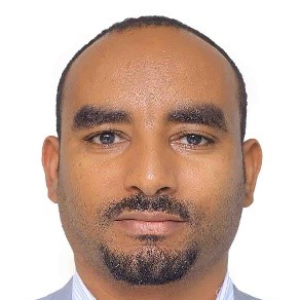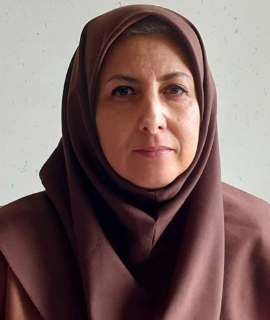Alberto Maringhini, ARNAS Civico, Italy
Background: Gallstones acute pancreatitis has increased incidence in young women in the 2 years postpartum. Middle aged women with longer period of breastfeeding have less hospitalization for gallbladder disease. Methods: We identified all sicilian women who delivered (2013-20 [....] » Read More















































Title : Lower genital tract congenital anomalies creatsas vaginoplasty - fertility preservation
George K Creatsas, University of Athens, Greece
Vulvovaginal Congenital Anomalies affects both genital tract health as well as fertility and reproduction. External genitalia should be checked in any case immediately after delivery. Amenorrhea, oligomenorhea and pelvic pain are common symptoms of lower genital tract congenital [....] » Read More
Title : “Just a pinch”? A national survey of provider attitudes regarding IUD procedure analgesia management and options
Nicole Friedlich, Burnett School of Medicine at Texas Christian University, United States
Introduction: The intrauterine device (IUD) is a popular and effective contraception option, however, pain associated with insertion remains a chief concern for recipients as well as a barrier for obtaining an IUD. Pain localized to the gynecologic community has an extensive his [....] » Read More
Title : The relationship between atopic dermatitis and pregnancy: Considerations for prenatal counselling and treatment for a global population
Indira Rayala, University of Washington School of Medicine, United States
Globally, atopic dermatitis (AD) is the most common skin disorder in pregnancy and accounts for 36-59% of obstetric skin disease. The pathogenesis of AD in pregnancy is unclear. The prevailing theory suggests the immunity shift from Th-1 to Th-2 during pregnancy leads to AD exace [....] » Read More
Title : Enhancing women’s health through gynecological innovation
Iwu Lilian Adanne, Klinikum Bielefeld Mitte, Germany
Advancements in gynaecological innovation have brought transformative changes to women’s healthcare, reshaping the landscape of prevention, diagnosis, and treatment. This presentation explores the remarkable strides made in gynecology, delving into cutting-edge technologies [....] » Read More
Title : CO2 therapy for vaginal atrophy
Natali Giulio Maria, Policlinico Casilino, Italy
Objective: Five patients diagnosed with vaginal atrophy underwent CO2 laser therapy, exhibiting different menopausal statuses. Comprehensive medical history was obtained, including obstetric backgrounds, menopausal status, and recent Pap smear results. Transvaginal ultrasound exa [....] » Read More
Title : Coexisting pathology of unruptured ectopic pregnancy with concurrent ipsilateral dermoid cyst : A rare occurrence
Anne Nicole Fuentes, Pasig City General Hospital, Philippines
A 29 year old Gravida 1 Para 0 who presented at the hospital with a 5-week history of amenorrhea, abdominal pain and vaginal bleeding. Transvaginal ultrasound revealed 3 pathologic findings : Tuboovarian complex on the right adnexa, a complex mass indicative of an unruptured ecto [....] » Read More
Title : Abnormal Embryos: Transfer impossible to disposed of
Julia V Voznesenskaya, European Medical Center, Russian Federation
Today, IVF clinics are competing for pregnancy rates. This competition is on the rise, at clinics' websites displaying increasing figures on laboratory efficiency. This information attracts both patients and insurance companies. The most common indicator used in such reports [....] » Read More
Title : Menstruation disorders related to COVID-19 infection in students of the faculty of medical and nursing Pelita Harapan University
Angelique Natalie, Pelita Harapan University, Indonesia
Background: The current COVID-19 pandemic has created several problems related to the reproductive system in women, especially menstrual disorders. Changes that occur in the cycle, volume, and duration of menstruation can raise important issues, because they are indicators o [....] » Read More
Title : Digital Muscle Testing (DMT) scale for pelvic floor muscle assessment
Sunita Patel, M D University Rohtak Haryana, India
During this presentation, the assessment of Pelvic Floor Muscle (PFM) using Digital Muscle Testing (DMT) scale will be discussed. PFM assessment is an important part of medical evaluation conducted to assess the functionality of the pelvic floor muscles. It refers to a group of m [....] » Read More
Title : The relationship of CCL4, BCL2A1, and NFKBIA genes with premature aging in women of yin deficiency constitution
Ruoxi Yu, Beijing University of Chinese Medicine, China
Traditional Chinese Medicine (TCM) defined constitution as a health statue or physical fitness that determines individual susceptibility to diseases. Previous studies found that the characteristic genes of Yin deficiency (YinDC) are part of the inflammatory aging signaling pathwa [....] » Read More
Title : Role of biofeedback pelvic floor training in elderly patients with obstructed defecation
Mervat Sheta Ali Gawdat Elsawy, Alexandria University, Egypt
Pelvic floor rehabilitation is essential to manage elderly patients with obstructed defecation. Program of biofeedback will be discussed with prerequisite, indication, and mechanism of biofeedback in these patients with usage of other physical modalities to improve emptying of [....] » Read More
Title : Repeated implantation failure a stressing situation that needs a calm management
Mehdi Kehila, Eve Fertility Center, Tunisia
Repeated embryo implantation failure (RIF) is an extremely frustrating condition for both patients and clinicians and its management constitutes a difficult challenge in the field of in vitro fertilization. There is actually no consensus in the definition and the strategy of [....] » Read More
Title : Women's autonomy in reproductive organ surgical interventions in underdeveloped countries
Kourosh Delpasand, Guilan University of Medical Sciences, Iran (Islamic Republic of)
In the current world and global custom, equality in many matters has been considered for women. Many people have mistaken beliefs about the male guardianship of a woman and regard the affairs of the woman as subject to the permission of her husband. She is the woman herself. The [....] » Read More
Title : Predictors of uterine rupture after one previous cesarean section among mothers who gave birth in one specialized hospital in Ethiopia: Unmatched case control study
Temesgen Tantu Arusi, Wolkite University, Ethiopia
Background: Uterine rupture is a rare occurrence but has catastrophic complications during pregnancy. The incidence is relatively higher in scarred uteri because there is a promotion of labor after cesarean section. There is a scarcity of evidence from low-income countries regard [....] » Read More
Title : Impact of internet and social media platform use on youths' risky sexual behavior in Addis Ababa university students, 2023
Jembere Tesfaye Deressa, Addis Ababa University, Ethiopia
Background: Risky sexual behavior is defined as any sexual activity that increases the risk of contracting sexually transmitted infections (STI) including HIV and unintended pregnancies. Exposure to sexual contents is fraught with health and social implications. A major source of [....] » Read More
Title : Time to death and predictors among cervical cancer patients admitted to Felege Hiwot Comprehensive Specialized Hospital, Northwest Ethiopia
Belsity Temesgen Meselu, Debre Markos University, Ethiopia
Background: A sexually transmitted virus called Human Papilloma virus is responsible for more than 99% of cervical cancer cases and its precursors. In 2019, the median survival time of cervical cancer patients at 5 years was 37 months. The survival time and predictors of death fr [....] » Read More
Title : Continuum of maternity health care service utilization and determinants in Ethiopia: A systematic review and meta-analysis
Belsity Temesgen Meselu, Debre Markos University, Ethiopia
Introduction: Although maternal morbidity and mortality are alarmingly high in Sub-Saharan Africa, maternal health care services utilization remains low. Promising achievements were recorded in reducing maternal morbidity and mortality under the millennium development goals and c [....] » Read More
Title : Assessment of knowledge and practices regarding menstrual hygiene management and its impact on school absence: Exploring the link between menstrual hygiene practices and academic attendance
Mohammed Hammad Jaber Amin, Alzaiem Alazhari University, Sudan
Background: Menstruation, a natural process, faces societal stigma and cultural taboos, particularly in low-income settings. Menstrual Hygiene Management (MHM) is crucial for women's empowerment, requiring access to affordable products, education, and support. Influenced by p [....] » Read More
Title : Effect of sensitization on attitude of female health workers towards cervical cancer screening
Maureen Dike Frank, Rivers State University, Nigeria
Cervical cancer screening is a health intervention for women at risk of developing cervical cancer. Documented evidence shows that it is treatable if early diagnosis is made and preventable if vaccination is given at the appropriate age. Regrettably, in most developing coun [....] » Read More
Title : Knowledge, attitudes, and practices regarding integrated HIV prevention and SRH services among adolescent girls and young women in Rwanda
Nsenga Bakianhe, Kigali University Teaching Hospital, Rwanda
Background: Adolescent girls and young women (AGYW) globally, particularly in Eastern and Southern Africa (ESA) and Rwanda, face significant challenges relating to HIV prevention and sexual and reproductive health (SRH). AGYW account for 26% of new HIV infections in ESA and have [....] » Read More
Title : The role of indocyanine green in minimizing ureteral injuries in complex total laparoscopic hysterectomy
Francesco Fedele, University of Milan, Italy
Total Laparoscopic Hysterectomy (TLH) carries a significant riks (1.2%, range 0.6%–4%) of ureteral complications, higher than open abdominal or vaginal approach. The presence of large fibroids leads to poor pelvic visibility, decreased uterine mobility, deformity a [....] » Read More
Title : Clinical presentation and frequency of metabolic syndrome in women with polycystic ovary syndrome
Sarwat Anjum, Liaquat University of Medical & Health Sciences, Pakistan
Introduction: Polycystic ovary syndrome (PCOS) is a common endocrine disorder affecting women of reproductive age. The aim of this study was to determine the variations in the clinical presentation and frequency of metabolic syndrome (MetS) in women with PCOS. Methods: This cr [....] » Read More
Title : Dedifferentiated mucinous ovarian carcinoma: A case report and literature review
Jasenka Mazibrada, Norfolk and Norwich university Hospital, United Kingdom
Introduction. Dedifferentiated mucinous carcinoma of the ovary is a rare, highly aggressive and molecularly distinct ovarian malignancy, characterised by frequent inactivation of core SWI/SNF complex and typically a low response rate to platinum-based standard care for& [....] » Read More
Title : Focal placenta accreta in a congenitally malformed uterus: A case report
Umniyah Abdulameer Majeed Abu Nayla, Dubai Academic Health Corporation, United Arab Emirates
Placenta accreta is defined as an abnormal trophoblast invasion of part or all of the placenta into the myometrium of the uterine wall. It is a well-known cause of maternal morbidity and mortality. Here, we present a unique case of focal placenta accreta due to a bicornuate uteru [....] » Read More
Title : Embryonal rhabdomyosarcoma of the cervix a diagnostic and management dilemma
Shrutika Bhuyar, SMBT Institute of Medical Sciences and Research Centre, India
Introduction: A malignant tumor arising from the embryonal skeletal muscle cells is Rhabdomyosarcoma (RMS). It’s incidence among children 0 to 14 years of age is 3% and from 15 to 19 years of age is 1) is the most common subtype of rhabdomyosarcoma in the female genital tra [....] » Read More
Title : ARID1A inhibits progression of ovarian cancer by inactivating hedgehog pathway
Shouying Xu, Children's Hospital of Zhejiang University School of Medicine, China
Ovarian cancer is one kind of malignant tumors derived from epithelial and germ cells, and is the second most lethal gynecologic malignancy worldwide. The abnormal activation of the Hedgehog (Hh) pathway is crucial for cancer progression, including ovarian cancer. AT-rich interac [....] » Read More
Title : Efficacy of methotrexate treatment in ectopic pregnancy: A retrospective cohort study
Lucia Di Francesco, Bronxcare Health System, United States
Ectopic pregnancy, a potentially life-threatening condition where fertilized eggs implant and develop outside the uterus, presents considerable risks to maternal health. This retrospective cohort study, conducted at BronxCare Hospital between January 2020 and September 2022, focu [....] » Read More
Title : IFA utilization and factors associated with IFA utilization among pregnant women attending ANC at government health facilities and family guidance clinic in Hawassa city, South Ethiopia
Amanuel Fanta Fanta, Hawassa College of Health sciences, Ethiopia
Background: Iron deficiency is the most common nutritional disorder in the world, and most revalent in women of reproductive age. Iron supplementation is a common strategy currently used to control iron deficiency, and iron deficiency anemia in developing countries. However, it i [....] » Read More